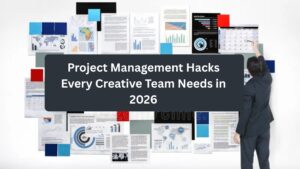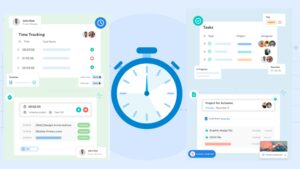Effective Project Scheduling Techniques keep your team on track, on time, and under budget. At Acteamo, we believe the right mix of scheduling methods can turn a stressful workload into a smooth workflow. Here are ten techniques to boost your project planning—and what you should watch out for.

1. Critical Path Method
What it is: Identifies the longest sequence of dependent tasks to reveal the minimum project duration.
Why it works: Prioritizes crucial tasks and highlights slack time.
Be careful: It can be complex for large projects and demands accurate time estimates.
2. Program Evaluation & Review Technique
What it is: Uses optimistic, pessimistic, and most likely time estimates to build flexible schedules.
Why it works: Helps manage projects with uncertain task durations.
Be careful: Requires frequent updates and can be cumbersome for small teams.
3. Gantt Charts
What it is: Visual timelines linking tasks, dependencies, and durations.
Why it works: Great overview of task flow and progress.
Be careful: Charts can get cluttered and outdated if not maintained.
Tip: Gantt Charts work even better when paired with open-source time management software to track actual vs. planned progress.
4. Milestone Charts
What it is: Highlights key dates and major deliverables on a simplified timeline.
Why it works: Ideal for high-level stakeholder updates.
Be careful: Doesn’t track individual tasks or dependencies well.
5. Fast Tracking
What it is: Overlaps tasks that were meant to be sequential.
Why it works: Speeds up delivery without additional resources.
Be careful: Raises the risk of rework and requires tight coordination.
Stay on schedule by using a timer software for Windows to monitor overlapping task execution closely.
6. Project Crashing
What it is: Shortens critical tasks by adding resources.
Why it works: Cuts project duration quickly.
Be careful: Can significantly increase costs and strain teams.
7. Rolling Wave Planning
What it is: Plans in detail for the near-term, high-level for the future.
Why it works: Adds flexibility for evolving projects.
Be careful: Needs ongoing updates and may confuse stakeholders expecting full detail.
Combine this with a timer application for PC to timebox immediate tasks while keeping long-term planning flexible.
8. Resource Leveling
What it is: Smooths out resource usage by delaying non-critical tasks.
Why it works: Prevents overallocation and burnout.
Be careful: Can extend schedules and complicate dependencies.
9. Linear Scheduling Method
What it is: Schedules repetitive tasks (e.g., construction phases) in sequence.
Why it works: Keeps repetitive workflows efficient and consistent.
Be careful: Limited to repetitive processes and not suited for varied task types.
10. Calendar-Based Scheduling
What it is: Uses calendar views to assign and visualize tasks.
Why it works: Easy to use and great for simple team planning.
Be careful: Lacks detail on dependencies and resource assignments.
Need lightweight scheduling? A timer app for Windows can help boost time awareness alongside your daily calendar plan.
Choosing Your Best Fit
| Technique | Best For | Watch Outs |
| CPM / PERT | Large, complex projects | Complexity & maintenance |
| Gantt Charts | Visual overall planning | Can get cluttered |
| Fast Track / Crash | Tight deadlines | Elevated risk/costs |
| Rolling Wave | Evolving scopes | Requires regular updates |
| Resource Leveling | Limited teams/equipment | Project delays |
| LSM | Repetitive tasks | Not for unique workflows |
| Calendar | Simple scheduling | Poor detail management |
How Acteamo Simplifies Scheduling
Acteamo combines visual timelines, task dependencies, time tracking, and real-time collaboration into one powerful, flexible platform. Whether you’re managing high-stakes launches or daily workflows, it adapts to your preferred scheduling technique, keeping your projects flowing and your team in sync.
Ready to upgrade your project planning?
Explore how Acteamo can help you implement these techniques and stay ahead, every step of the way.









